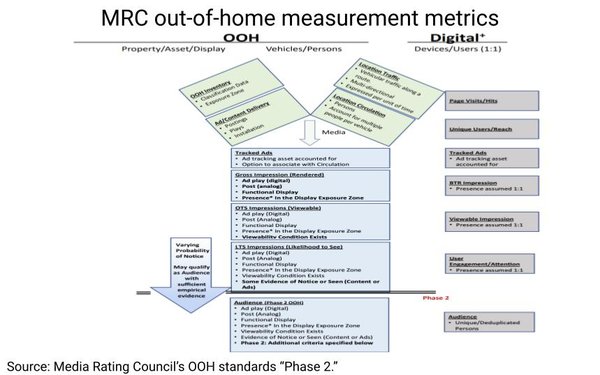
The Media Rating Council (MRC) this morning released a draft of
"Phase 2" of its controversial out-of-home media audience-measurement requirements for a 30-day public comment period before they are ratified as the U.S. ad industry's standard.
Phase 2,
which can be read here, adds requirements for measuring the demographic -- or persons-based -- audience exposure to
out-of-home media, building on Phase 1, which only established standards for
counting out-of-home media audience impressions.
Phase 1, which was released in April, can be read here.
advertisement
advertisement
Importantly, the Phase 2 standards also provide
"comparability to other measured media" (see chart above), which some believe will help out-of-home media compete on more of an even playing field with other higher-priced ad-supported media.
Key elements of the Phase 2 requirements include:
Evidence of "likelihood-to-see" (LTS) required for audience qualification such as considerations in the following
areas:
- Size of the asset (minimum apparent size)
- Environmental and visual obstruction
- Precise
location of the asset
- Dynamic nature of the asset
- Illumination and
seasonality
- Speed, direction and mode of travel
Requirements for the
use of LTS thresholds
Deterministic data use requirements including:
- Representative nature of data
- Robust and sufficient
coverage
- Recency and staleness policies
Empirical support requirements
Quality control over
data sources
Model selection and support
Disclosures
Comments on the draft, which will be accepted through August 27, can be
submitted via email to MRC at rpinelli@mediaratingcouncil.org